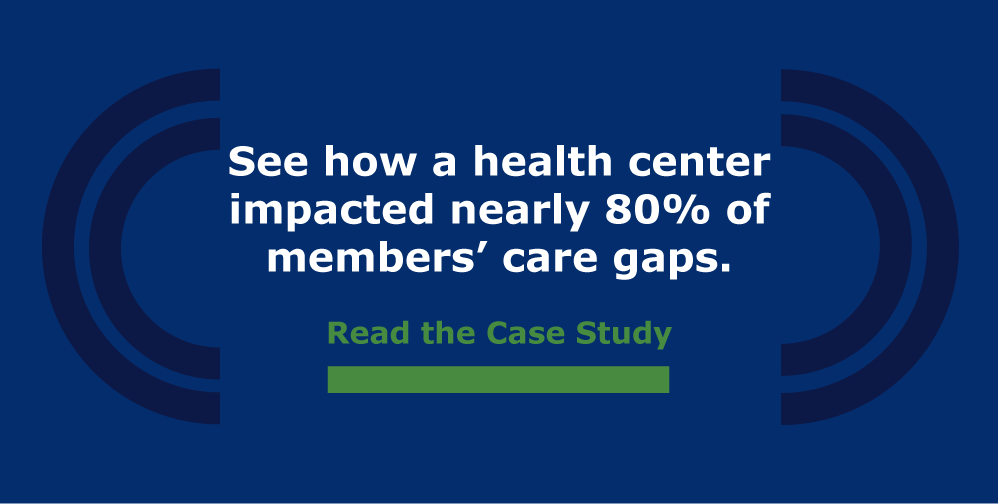Maximize the Referable Moment to Double Patient Compliance and Close Care Gaps

Gene Huang will lead a roundtable discussion on maximizing referable moments at the 2021 RISE West Summit on Wednesday, September 1.
One of ReferWell’s specialties is making the most of what we call the referable momentSM.
What is a referable moment? It’s the point in time when a patient or member is most likely to accept advice and take action to seek follow up care or treatment to improve their health.
Referable moments happen every day in health care, whether you’re aware of and leveraging them or not. Forward-thinking health care providers and payers take advantage of these moments, as they are critical to getting patients to engage in the behaviors that improve health outcomes, meet quality targets, and maximize health plan financial results.
Where Does the Concept of a Referable Moment Originate?
The idea of a referable moment is based loosely on a teachable moment, which is generally defined as a time at which learning a behavior becomes compelling. They’re both points in time when a person is open to learning or taking action.
There are two key differences: 1) a teachable moment often arises by accident and 2) may result from an undesirable outcome; something bad happens and we learn from it. A teachable moment is often unplanned, negative, and requires corrective behavior.
A referable moment, on the other hand, is proactive and positive. It’s not a correction but rather an opportunity to build on the trust already established between patient and provider. It’s definitely not an accident and if you’re doing it right, you can and should plan around it. It’s not even very rare … but how you leverage it is.
When Does a Referable Moment Happen?
If you want to make the most of referable moments, you need to know when to look for it. As discussed above, we’re talking about an opportunity when the patient is the most open to receiving and acting on a health recommendation. In most conversations with a patient, there is an opportunity to influence that person to take action to improve their health. Here are two examples:
Example 1: A Patient Visiting a Doctor
A patient visiting a doctor for an in-person appointment is a common example of a referable moment. If you consider that a doctor can see as many as 50 patients per day, there may be 20 or more referable moments when the doctor might recommend a referral to a specialist. Each one of these is an opportunity to increase the likelihood that the patient will seek follow-up care, leveraging the trusted relationship and reinforcing the recommended action.
Example 2: A Care Navigator Calling a Health Plan Member
This example is another highly effective opportunity to leverage a referable moment. In this scenario, the health plan care navigators are calling a targeted list of members—say, patients who have not had a recommended colonoscopy—to educate them on the necessity and value of the preventive screening and close care gaps with the ability to book appointments right on the phone. Or, perhaps the health plan has tasked care navigators with utilizing social determinants of health benefits, such as signing up for Meals on Wheels to improve access to nutritious food for members with food insecurity.
Both examples are situations that ReferWell handles often, and we double the effectiveness of these referable moments. In other words, ReferWell makes it twice as likely that a patient will take the desired action.
Doctors Engaging Patients in Their Care
It’s worth noting that the way providers handle the referable moment has evolved over time. It used to be that a doctor’s approach to the doctor-patient relationship was one of “I’m the doctor. Do what I say” (and assume the patient will follow their direction).
At this point, most doctors recognize that patients are consumers and are not going to blindly follow what the doctor orders. Modern doctors realize that they need patients to be partners in their care. They know that patient behavior is a critical piece of the equation and the dialogue. That’s why there is so often a moment when a doctor is trying to convince a patient to take action.
It’s why today’s providers, care navigators and health plans are all working to build trust with patients—so that the patient has enough confidence in the recommender’s guidance to follow that push in the direction of better health.
This change in how members and patients make health care decisions has made it absolutely necessary to pay attention to the referable moment, and take maximum advantage of them.
Referable moments come and go every day. Most of the time, the moment is wasted; ReferWell makes the most of the referable moment. We use the moment effectively to get a desired action that improves patient compliance, health outcomes and health plan financial results. We give providers, care navigators and, on a higher level, health plans, the tools to leverage these moments.
We don’t create referable moments; we leverage them. What will you do to make the most of your referable moments?
Written by Gene Huang
Gene is an expert in building and scaling healthcare businesses, including health plans and provider organizations; payment reform and value-based care initiatives; and post-acute and long-term care. His three decades of experience includes leadership roles at Oxford Health Plans and Cigna, and investor roles in healthcare ventures. As ReferWell’s Executive Chairman, Gene develops strategic relationships with partners to drive short-term revenue and long-term strategic alignment. Gene has been a ReferWell board member since 2015.

 © COPYRIGHT REFERWELL
© COPYRIGHT REFERWELL 